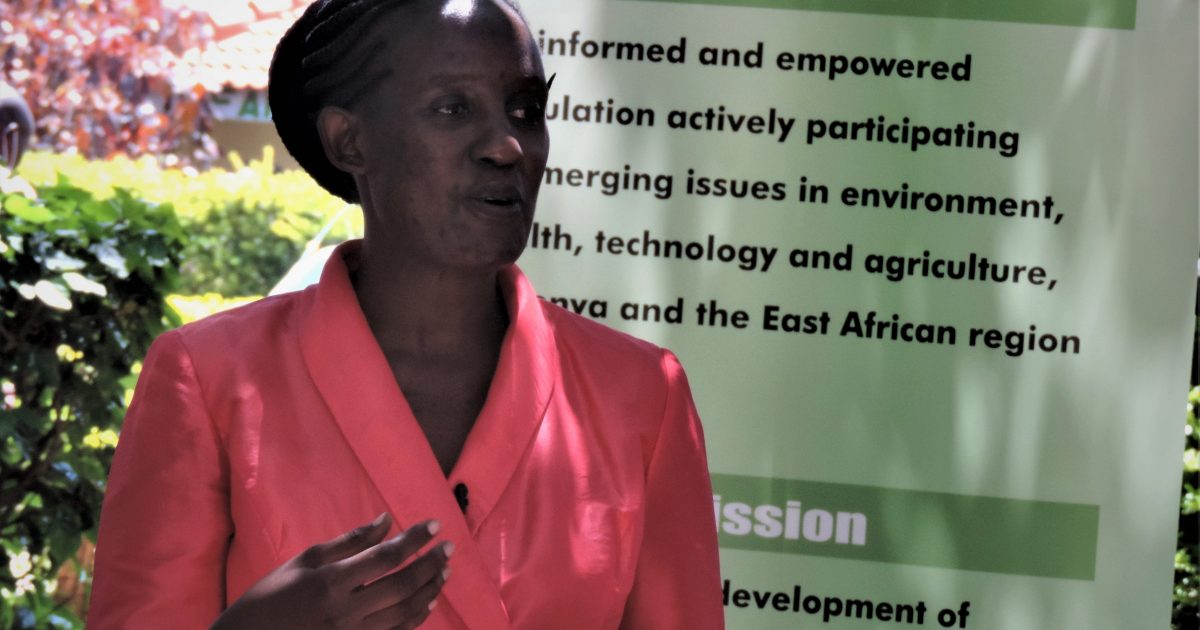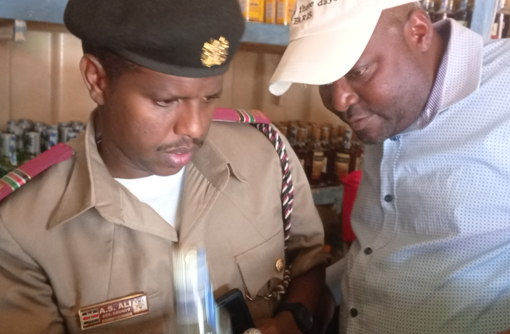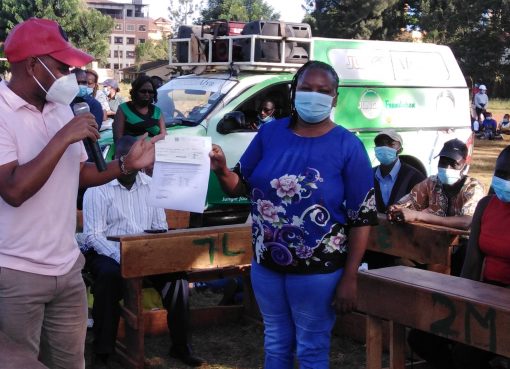Many women and bisexuals especially in Africa find it difficult to practice safe sex to guard against HIV/AIDS and other Sexually Transmitted Infections (STIs). As such, they often find themselves on the crossroads in the fight against the pandemic.
However, there could be light at the end of the tunnel since a vaginal ring intended to be used for a month at a time has moved a step closer to potentially becoming a new HIV prevention method for cisgender women in sub-Saharan Africa, who despite being the face of the epidemic, have few options for protecting themselves against being infected.
The term cisgender refers to women whose gender identity and expression matches the biological sex assigned at birth.
The ring which women can insert and replace by themselves slowly releases an antiretroviral (ARV) drug called dapivirine into the vagina – the potential site of HIV infection – during the month it is worn. The International Partnership for Microbes (IPM) developed the monthly dapivirine ring and is seeking its approval by relevant stakeholders including the WHO.
This revelation has emanated from research spearheaded by Microbicide Trials Network (MTN) studies of the ring’s safety in girls, pregnant and breastfeeding women taking place in parallel in South Africa and other research centres across the world.
The European Medicines Agency (EMA) announcement that it has adopted a positive scientific opinion on the ring’s use in low and middle-income countries is a significant step forward on the path towards potential approval of the dapivirine ring in African countries.
Speaking during a media café at a Kisumu hotel organized by Media for Environment, Science Health and Agriculture (MESHA) Wednesday, Dr Victor Mudhune the branch chief, HIV research at KEMRI/CDC Kisumu and his colleague Dr. Grace Mboya explained a detailed trial process HIV/AIDS and COVID -19 vaccines were subjected to before approval for use by human beings.
Doctors Mudhune and Mboya said IPM planned to submit applications to national medical regulatory authorities in East and Southern Africa in collaboration with the World Health Organization (WHO), and the US Food and Drug Administration (FDA) later this year for approval.
They said in a press release that WHO was expected to revise its HIV/AIDS treatment and prevention guidelines with evidence-based recommendations for policymakers and healthcare providers on the ring’s use and make a determination for a global quality assurance designation (‘prequalification’).
Other than condoms, the only other HIV prevention product approved so far involves daily use of an ARV pill otherwise known as Oral Pre-Exposure Prophylaxis (PrEP).
If approved, the dapivirine ring would be the first biomedical ring prevention method specifically for cisgender women and the first long-acting method. Importantly, this would mean women could have the privilege to choose the method that works best for them.
“It has been a long road but we have not reached our ultimate goal of having multiple options for women at risk of HIV. But this positive opinion by EMA gets us closer than we have ever been. It’s a monumental achievement for women’s HIV prevention, and to that, we owe IPM for its scientific leadership and vision,” stated Prof. Sharon L. Hillier the Vice-Chair Department of Obstetrics, Gynaecology and Reproductive Sciences at Pittsburg University, South Africa.

The EMA’s review of the ring was done through a procedure called Article 58, which is conducted in cooperation with WHO and intended for products that would be used primarily in low and middle-income countries.
IPM’s application to the EMA included data from 183 non-clinical studies, 11 phased I and phase II safety and pharmacokinetics trials, and two-phase III trials: The Ring Study (IPM 027), led by IPM, and ASPIRE (MTN – 020) conducted by the MTN.
Together, the two-phase III trials involved more than 4500 cisgender women aged between 18 – 45 in Malawi, South Africa, Uganda, and Zimbabwe. Their results, reported in 2016 established that the dapivirine ring was well-tolerated and helped reduce the risk of HIV by approximately 30%.
Higher levels of protection were seen in women who used the ring most regularly. Results of the Open-Label Extension (OLE) studies suggest greater risk reduction (about 50%) though, with no placebo group, there is less confidence in these findings. Additional data provided during the EMA’s review showed that the dapivirine ring reduced women’s HIV risk by 35% with no safety concerns with long-term use.
She pointed out that the initial approval of the ring by African regulators would not apply to girls under 18 years or pregnant and breastfeeding women but added that the MTN was conducting a safety study of the ring in these populations.
The rates of HIV infection are especially high among adolescent girls and young women in much of Africa, as well as for women during pregnancy and breastfeeding, when they may be two to four times likely to acquire HIV.
“Pregnant and breastfeeding women and adolescent girls are those in greatest need of HIV prevention tools yet they are often overlooked in clinical trials of investigational products. We can’t afford to wait to know whether or not the ring will be approved, which is why these studies are being conducted now, in parallel with regulatory review process,” said Jared Baeten, Professor of Global Health and Epidemiology and Vice Dean of the School of Public Health at Seattle University, USA.
But Dr. Mboya and other researchers emphasize that no single HIV prevention method would work for everyone since women’s needs and preferences were different and could change over time. As with contraception, the more HIV prevention options available to women, the more likely one will and can be used. She added that Oral PrEP is very effective, but only if taken daily as directed, and this could be challenging for some people, or may not be desired.
She added that the monthly dapivirine ring would give women who were unable to use the daily Oral PrEP consistently or who choose not to use a product that delivers drugs systematically with another option.
“I am excited about the positive opinion from EMA on the dapivirine ring – as are many of the women and study teams who took part in our studies. However, if we are truly committed to sealing a tangible reduction in HIV incidents in women, we need to provide them with multiple options that include much more than just Oral PrEP and the vaginal ring. This is a significant and positive step forward but our work must continue in this area,” said Prof. Thesla Palanee of the Wits Reproductive Health and HIV Institute in Johannesburg, South Africa.
Dr. Mboya explained that the first clinical trial to demonstrate effectiveness against HIV was done on the RV144 (2003 – 2009) and involved 16, 000 volunteers demonstrating 31.2% prevention against the virus. KEMRI/CDC Kisumu station has played a key role in the high profile trials. She pointed out that two vaccines; AIDSWAX in combination with ALVAC had better immune responses than the RV144 vaccine.
She described the UHAMBO study which is ongoing in South Africa as “a journey of Hope,” involving 5407 volunteers even though it was stopped early after it was found not to be effective (ineffective) against HIV.
The Medic singled out the other ongoing study as IMBOKODO (meaning a rock) which involved 2, 600 women in South Africa, Zambia, Mozambique, Malawi, and Zimbabwe as a vaccine using the mosaic antigen.
“The other ongoing vaccine trial called MOSAICO involved 3800 Gender (Male) and Transgender group. Monoclonal Antibody (mAb) is used to fight HIV. When applied on the long term non-progression (not taking ARVs but took long to progress to a full-blown AIDS) produced interesting results. The mAb also called “elite controllers” has been found to block HIV in about 90% of those infected with different strains of HIV,” she explained.
Globally, 213 participants have so far been screened under the AMP research study but were scaled down to 82, and finally to 20 after 62 of the participants exited the vaccine trials, explained Dr Mboya. She revealed that the AMP preliminary results would be released during the HIVR4P Conference early next year (2021).
Dr. Mudhune on his part said since the onset of COVID – 19 the HIV/AIDS treatment and related programs were temporarily paralyzed but “this should not make our clients stop visiting our health facilities to access ARVs as stipulated”.
By Joseph Ouma





